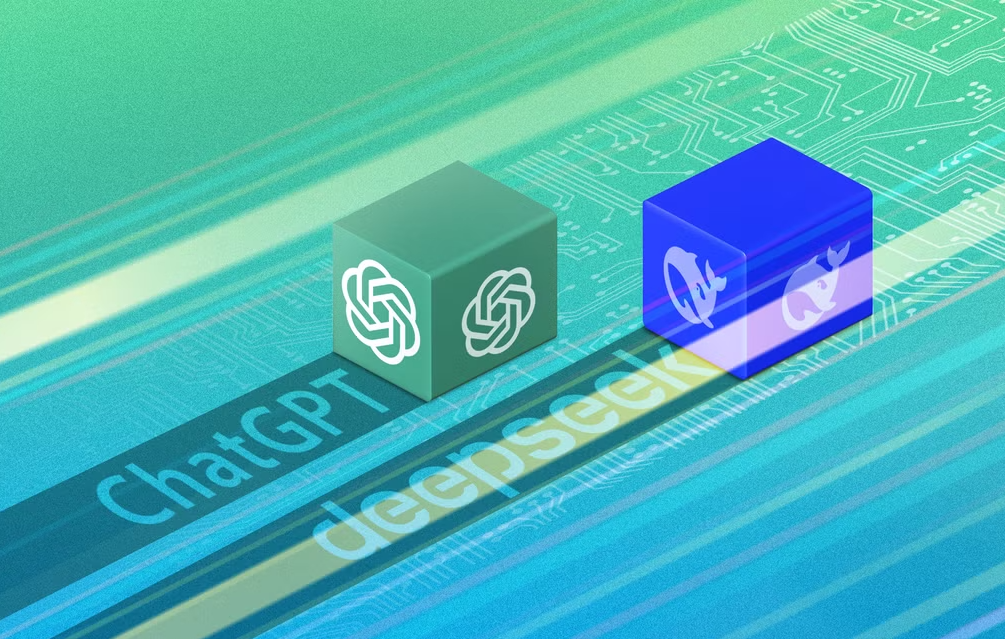
DeepSeek dispelled the preconception that having compute power alone is sufficient for artificial intelligence (AI) dominance.
DeepSeek’s success has upended assumptions about AI competition between the U.S. and China. The company’s rapid ascent showcases that algorithmic efficiency can indeed compensate for a lack of high-end semiconductors. This revelation has rattled U.S. tech markets and created an array of emotions for investors domestic and abroad. After stifling China's AI progress for the last few years, the U.S. must now reevaluate the suite of export controls designed to curb China’s AI ambitions.
Focus on downstream tech diffusion, not upstream export controls
A large topic missing from today’s AI discourse is deployment or inference computing. This is the second stage of Large Language Models (LLM) development, arguably the most important after training. The strategic aim for the U.S. AI leadership should shift away from upstream export controls on training semiconductor chips to ensuring that the U.S. excels in deploying AI applications across various industries. This means focusing on inference chips that allow processing inputs (texts, images, etc.), run calculations, and generate rapid responses to AI applications downstream at economy of scale. To compete with China lies not just in technical know-how but also with China’s ability to rapidly diffuse technology across sectors at lower costs.
One of China’s comparative advantages for market dominance is economies of scale, or the decreasing cost of goods associated with increasing scale iterated among the massive Chinese population. For example, take a look at the global solar panels industry. Since 2011, China's strategic focus on large-scale manufacturing and supportive industrial policies has enabled significant cost reductions through iterating and scaling out in its domestic solar panel market. These developments have played a crucial role in decreasing global solar energy costs, promoting wider adoption of renewable energy solutions.
If policymakers insist on using export controls, they should consider shifting from restricting training chips to focusing on inference chips—critical components for deploying AI at scale. Training an AI model is a one-time process; however, deploying it requires ongoing access to optimized hardware for inference tasks. The economic advantage lies in who can run AI applications efficiently at scale to the global market rather than who can train them expensively.
DeepSeek's achievements demonstrate the limitations of current export control strategies. When push comes to shove, restricting access to inference chips would be more strategic for the downstream AI race. Albeit, this approach implicitly admits defeat for export control strategies, but if the U.S. continues to frame AI competition as a semiconductor arms race rather than an economic and technological diffusion race, it risks falling behind in industries poised for transformation through AI.

Open-source is a double-edge sword
DeepSeek's success is partly attributed to China's increasing reliance on open-source AI development—an area where the U.S. appears to be retreating due to national security concerns. This paradox could give China the edge; if U.S. policymakers reject open-source AI development while China embraces open-source diffusion, Chinese models could gain wider global adoption.
Open-source AI fosters a collaborative environment where researchers and developers worldwide can contribute to and refine AI models. This collective effort accelerates innovation, leading to more robust and versatile AI applications. By spearheading open-source initiatives, the U.S. can harness global talent to drive rapid advancements, ensuring American firms remain at the forefront of AI technology. Notably, Meta's Chief AI Scientist, Yann LeCun, highlighted that DeepSeek's success underscores the potential of open-source models to surpass proprietary ones. Furthermore, Meta's recent decision to permit U.S. national security agencies and defense contractors to use its open-source AI model, Llama, exemplifies this approach.
While open-source communities may possess their idiosyncratic culture, they add significant value to the broader innovative landscape. Government incentives for firms to open-source their foundational models could help ensure that American digital governance standards have a substantial presence in the global open-source ecosystem. Additionally, open-source AI diminishes barriers to entry, enabling startups and smaller companies to innovate without the prohibitive costs associated with proprietary technologies. This inclusivity fosters a vibrant ecosystem of innovation, driving economic growth and ensuring that the U.S. remains competitive in the global AI market.
As demonstrated by DeepSeek and the early days of OpenAI, genuine innovation stems from the collision of ideas within an open platform. However, some strategists advocate for creating a new American-centric open-source ecosystem—a fundamentally misguided effort. True competition requires a hybrid approach: one that embraces open-source innovation for scientific knowledge sharing while also maintaining closed systems for capital funding that accelerate AI technologies into market-ready applications. The real race is not merely about who can train the largest model but about who can effectively integrate AI into critical sectors such as health, education, and consumer goods.
If DeepSeek’s rapid ascent illustrates anything, it is that the future of AI will not be determined solely by brute-force computational capacity. Instead, adaptability, agility, and innovation—qualities that have long defined American technological leadership—must remain foundational to the U.S. approach. Moreover, the U.S. should learn to coexist with and create AI diplomacy with strategic competitors rather than viewing them solely as adversaries. The alternative is an outcome that would not only diminish American influence but also stifle the collaborative spirit essential for advancing American technology. This could lead to a future where the center of AI gravity shifts eastward faster than anyone expected.